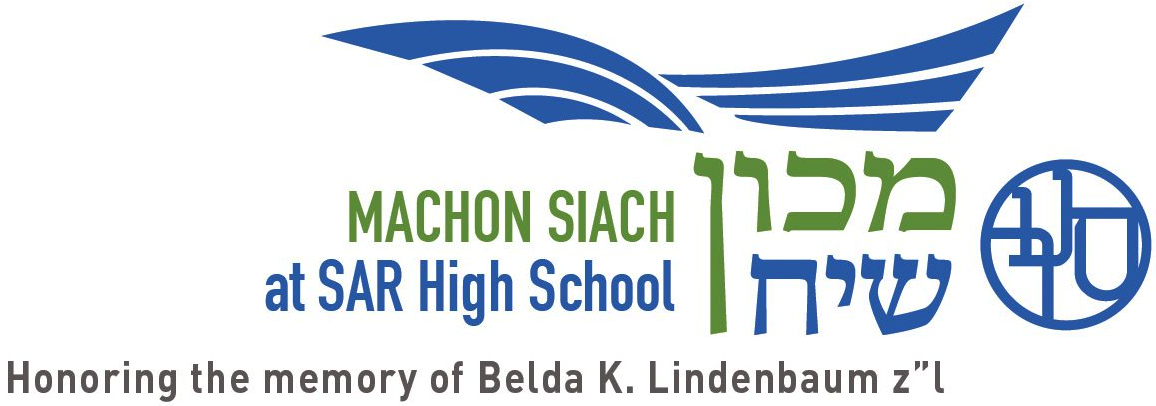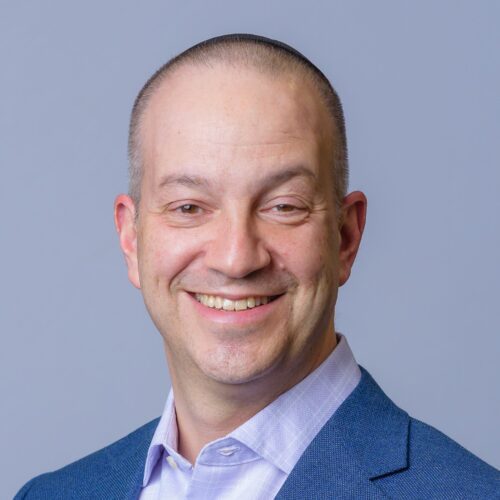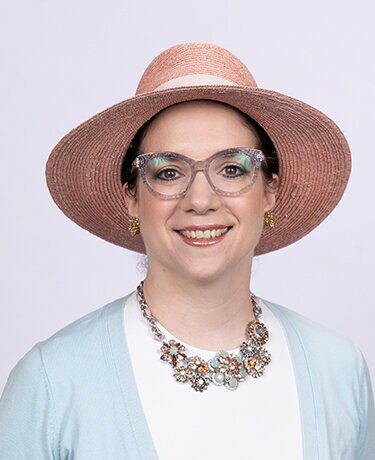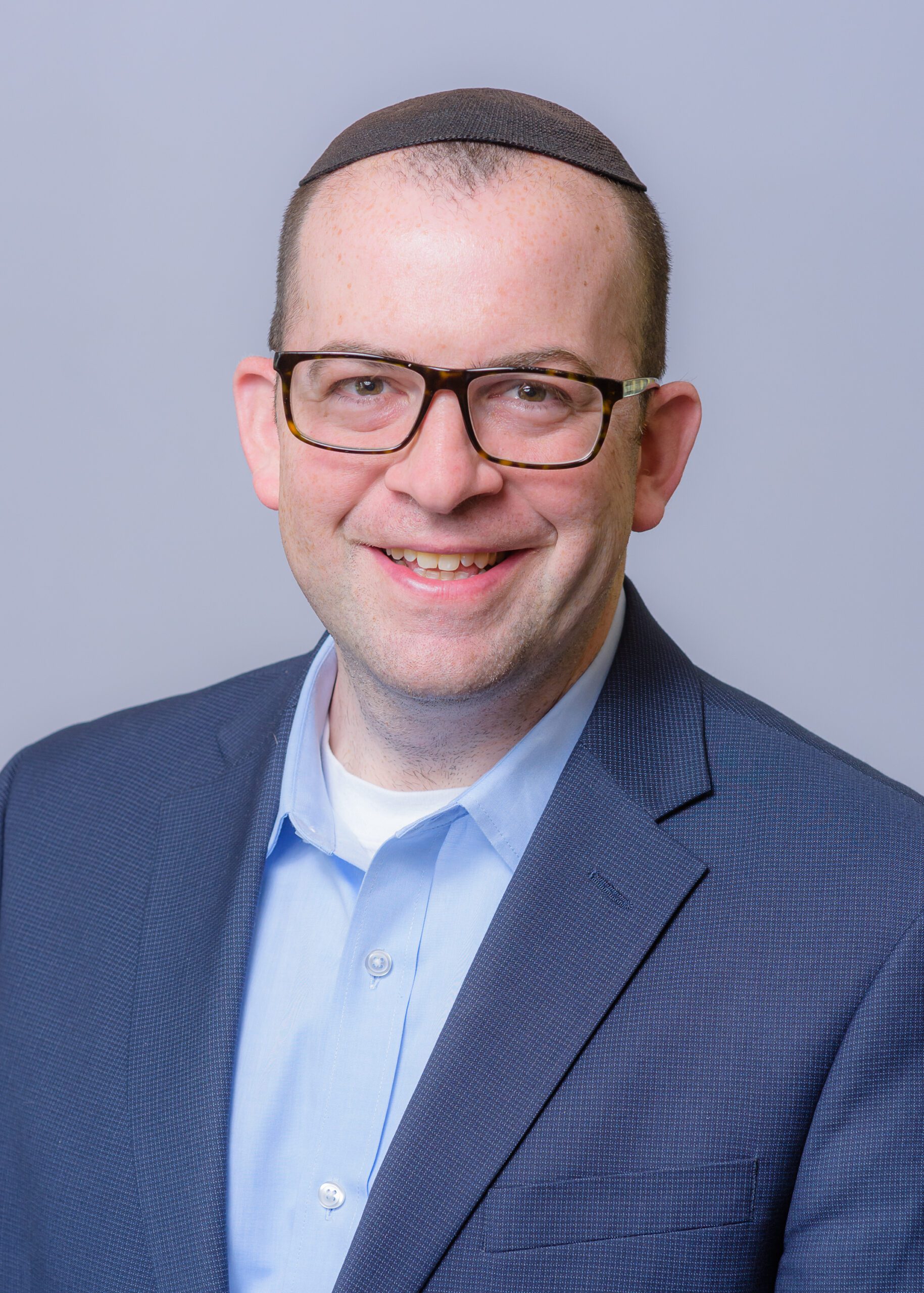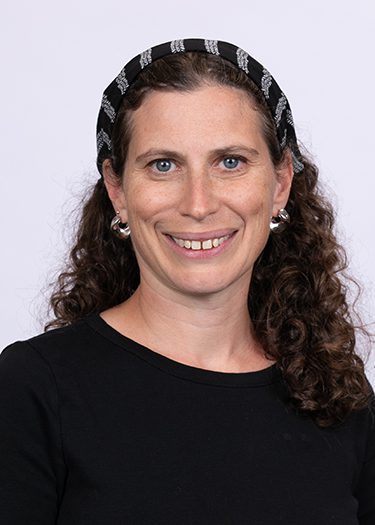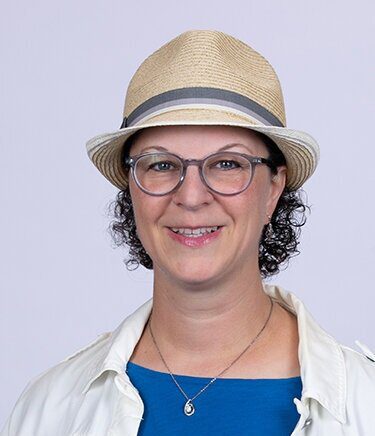About Machon Siach
We seek to engage contemporary issues and foster teacher growth through practical scholarship and action research to strengthen our school and the field of Jewish education.
Our Mission
Machon Siach at SAR High School seeks to shape the high school into a “thinking institution” by empowering teachers to meaningfully explore topics in contemporary Jewish education, bridging theory and practice in order to strengthen our capacity for living a committed and observant Jewish life while engaged with the broader world in our contemporary moment.
Machon Siach supports in-depth faculty cohort research as well as programs for SAR graduates, parents, community educators, and academics.
Our founder, Rabbi Tully Harcsztark, speaks about Machon Siach at SAR High School. Learn what drives this research institute. Click here to read more.
What is Machon Siach?
by Rabbi Tully Harcsztark
Machon Siach was conceived in an attempt to make high school – our high school and perhaps High School in general – into more of a thinking institution by providing teachers with the time and space, with the support to explore large cultural questions that are centrally important to Jewish Education.
Two convictions drive the project: the first, a belief that the high school years represent a very important moment, a crucial nexus in the life of our children. This time serves as a bridge between adolescence and early adulthood, between family and community, between past and present, and between theory and practice. The high school moment where teachers and students meet is a time of tremendous growth and change; change for students on an individual level and change in the world within which they are living. In this way, while high school is about curriculum and classes, clubs and chaggigot, friendship and ruach, high school should also be a place where teachers are able to research, write, and develop a voice, a public intellectual voice around the religious and cultural issues of schooling; how to teach Israel, connecting students to prayer, the way that technology has dramatically changed the lives of our children at the most rapid pace. These are a few examples where research-based dialogue within and across educational institutions is invaluable.
Which brings me to my second conviction that drives the Machon: high school teachers have a unique perspective to bring to these questions. While university scholars might write about the effects of technology on kids, and rabbis have views on how Jews should pray, high school teachers are in a unique position to bridge theory and practice in a way that profoundly enriches our approach to these issues in our schools. Here is a pet peeve of mine, 75% of a university professor’s time is dedicated to research and 25% to teaching. (Those of course are rough estimates). But high school teachers are expected to teach 100% of the time with no expectation of researching or thinking about the impact of scholarship on schooling or considering what has changed and what has stayed the same or of bringing theory to bear on practice in the education of our kids.
In this spirit, the Machon’s model convenes cohorts of educators – at times with SAR and at times across institutions – to develop an educational scholarship that is both theoretical and practical, that creates partnerships between teachers, among schools, and between the school and the university. Siach topics are often specifically Jewish: for example teaching prayer, gemara or Israel to 21st century kids. Sometimes the topics are more broad: teaching citizenship to American Jewish kids today in a divided world, exploring the use of technology, or substance use in our high school community. In all of these areas, to keep our schools deeply relevant and responsive for our kids, we must invest in thinking big. Machon Siach looks to think big and in that spirit the Machon seeks to engage its different constituencies in the conversation. For us it begins with the dialogue among educators. it extends to include parents and graduates in the conversation as well. Ultimately we believe that it is an effort that will deeply benefit our students.
We are so grateful to Mr Marcel Lindenbaum and family for providing the support that allowed us to launch the Machon. That Machon Siach honors the memory of Belda Lindenbaum is an honor for us and all involved in Machon Siach. We look forward to further developing the Machon as part of the Grand Conversation between Torah and the world.
Our Leadership
Advisory Board

Giti Bendheim

Sender Cohen

Nathan Lindenbaum

Dan Smokler

Ariel Weiner
Our History
Belda Kaufman Lindenbaum z”l
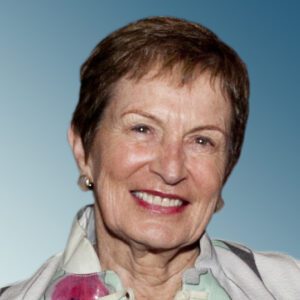 Machon Siach is named in loving memory of Belda Kaufman Lindenbaum z”l, an advocate for serious women’s learning, addressing the plight for agunot, and women’s leadership in the Jewish community.
Machon Siach is named in loving memory of Belda Kaufman Lindenbaum z”l, an advocate for serious women’s learning, addressing the plight for agunot, and women’s leadership in the Jewish community.
Born in 1938 in New York, Belda attended the Ramaz School and Finch College, a women’s college in Manhattan. As a young mother to five children–Nathan, Matthew, Bennett, Victoria and Abigail, she was encouraged by her husband, Marcel Lindenbaum, to redefine her relationship with Orthodoxy and model a pathway to observance for her daughters. Together, the Lindenbaums founded and supported many Jewish organizations that defined a new order for scholarship and Jewish practice, most notably Midreshet Lindenbaum yeshiva for women, Drisha, JOFA, Yeshivat Maharat, Darkhei Noam, and Machon Siach at SAR High School.
Young women who studied at Drisha or participated in JOFA found in Belda an impressive figure guiding important institutions and yet an engaged and accessible mentor who pushed them to fulfill their potential and overcome their fears at challenging the establishment. Belda, herself, was not afraid to raise her voice when necessary to be her own advocate, famously calling out “Kaddish” from the women’s gallery of a synagogue when the men below failed to recognize that she wished to say the mourner’s prayer. Her courage caused them to stop and take note and her prayer proceeded.
In May 2015, Belda Kaufman Lindenbaum died, leaving a remarkable legacy in the world of Jewish scholarship and particularly Jewish women’s scholarship. In her memory, the Lindenbaum family came forward with a major gift to SAR High School to fund Machon Siach based on conversations with Belda at the end of her life. She viewed SAR High School as taking on the mantle of Modern Orthodox leadership and felt that building a strong, vibrant, Modern Orthodox community requires a school with a vision of thought leadership from administration, faculty, and alumni. Her commitment to SAR is also shared by her children. Nathan, Victoria and Abigail all have children who attended SAR High School. Each of Belda’s children and grandchildren exhibit the energy and commitment to the Jewish community that was modeled and lived by Belda during her lifetime.
Tribute Film In memory of Belda Lindenbaum z”l
by Elena Neuman Lefkowitz
with appreciation to JOFA for use of footage
A tribute to Belda Lindenbaum z”l
by Rabbanit Lisa Schlaff
Tribute Film, in memory of Belda Lindenbaum z”l
by Elena Neuman Lefkowitz
with appreciation to JOFA for use of footage
A tribute to Belda Lindenbaum z”l by Rabbanit Lisa Schlaff
(on the occasion of shloshim memorial commemoration)
To honor Belda’s legacy of being marbitz Torah, family, friends, and the community at large have completed learning of Torah, Neviim, Ketuvim, Mishna, and Tehillim. As is customary at a siyyum, we are going to complete one of these sections together. The final three pesukim of the Torah serve as a eulogy for Moshe.
וְלֹא־קָ֨ם נָבִ֥יא ע֛וֹד בְּיִשְׂרָאֵ֖ל כְּמֹשֶׁ֑ה אֲשֶׁר֙ יְדָע֣וֹ יְהֹוָ֔ה פָּנִ֖ים אֶל־פָּנִֽים׃ לְכׇל־הָ֨אֹתֹ֜ת וְהַמּוֹפְתִ֗ים אֲשֶׁ֤ר שְׁלָחוֹ֙ יְהֹוָ֔ה לַעֲשׂ֖וֹת בְּאֶ֣רֶץ מִצְרָ֑יִם לְפַרְעֹ֥ה וּלְכׇל־עֲבָדָ֖יו וּלְכׇל־אַרְצֽוֹ׃ וּלְכֹל֙ הַיָּ֣ד הַחֲזָקָ֔ה וּלְכֹ֖ל הַמּוֹרָ֣א הַגָּד֑וֹל אֲשֶׁר֙ עָשָׂ֣ה מֹשֶׁ֔ה לְעֵינֵ֖י כׇּל־יִשְׂרָאֵֽל׃ {ש}
Never again did there arise in Israel a prophet like Moshe – whom God singled out, face to face, for the various signs and portents that God sent him to display in the land of Egypt, against Paroh and all his courtiers and his whole country. And for all the great might and awesome power that Moshe displayed before all Israel.
It is a rather short eulogy, and there are so many things upon which the Torah could have focused. It could have focused upon the way Moshe overcame a disability in order to become the spokesman of the nation. It could have focused upon the way Moshe took action in the face of injustice. And it could have focused upon the way he defended the people in the face of angry God.
What are we asked to remember about Moshe?
ולא קם נביא עוד בישראל כמשה
We are asked to remember his vision.
When we picture moshe, the Torah does not ask us to picture the baby rescued from the river. It does not ask us to picture the man who miraculously defeated amalek. And it does not ask us to picture the man who sang after the splitting of the sea.
ולא קם נביא עוד בישראל כמשה
Here is the picture of Moshe the Torah asks us to call to mind: The man who stood on the mountain, alone, miles apart from his nation, and withstood God’s voice amidst the thunder.
The man who had the greatest vision in all of history, transmitted that vision to his people, and came tantalizingly close to seeing that vision unfold upon literal ground. We all know, however, how that story ends.
The great visionary of the mountain stands again alone on another mountain and is told that he cannot see his vision fulfilled. He can dream but he cannot make the dream come true. The נביא is not meant to carry out the נבואה.
Enter Yehoshua.
Sefer Yehoshua begins with an explicit command to Yehoshua to carry out the vision of Moshe.
א וַֽיְהִ֗י אַחֲרֵ֛י מ֥וֹת מֹשֶׁ֖ה עֶ֣בֶד יְהֹוָ֑ה וַיֹּ֤אמֶר יְהֹוָה֙ אֶל־יְהוֹשֻׁ֣עַ בִּן־נ֔וּן מְשָׁרֵ֥ת מֹשֶׁ֖ה לֵאמֹֽר׃ ב מֹשֶׁ֥ה עַבְדִּ֖י מֵ֑ת וְעַתָּה֩ ק֨וּם עֲבֹ֜ר אֶת־הַיַּרְדֵּ֣ן הַזֶּ֗ה אַתָּה֙ וְכׇל־הָעָ֣ם הַזֶּ֔ה אֶל־הָאָ֕רֶץ אֲשֶׁ֧ר אָנֹכִ֛י נֹתֵ֥ן לָהֶ֖ם לִבְנֵ֥י יִשְׂרָאֵֽל׃
After the death of Moshe, the servant of God, God said to Yehoshua ben Nun, Moshe’s attendant: My servant Moshe is dead. Prepare to cross the Jordan, together with all this people, into the land I am giving to Bnei Yisrael.
Yehoshua did not conceive of the vision, but he births it into reality. Yehoshua is all details and tactics and strategy and plans. He organizes the nation, leads them into battle, resolves conflicts, and settles his nation in the promised land.
On four separate occasions the Torah tells us בבוקר יהושע וישכם – Yehoshua awoke early in the morning. This is not a man who rested on his laurels. This is not a man who let things be. This is a man of action.
Most significantly when the Torah describes Yehoshua it consistently describes him as being with the people. The Torah tells us העם בתוך יהושע וילן,on the eve of war Yehoshua slept amongst the people.
In its description of battles Yehoshua fights amongst the people – העם בתוך And like Moshe Yehoshua also appears on a mountain. Unlike Moshe he does not appear on the mountain alone but amongst the people העם בתוך.
And the vision he seeks to carry out in his covenant with the nation on גריזים הר is not his own but rather a vision we were introduced to by Moshe.
Most of Sefer Yehoshua is comprised of lists and names and delineations of boundaries. These are the parts we read quickly. This is not the grand vision, but what the vision looks like on the ground. What the Torah seems to be telling us, and not so subtly, in its juxtaposition of Moshe and Yehoshua, is that there are leaders who are neviim, and there are leaders who are btoch haam. There are leaders who outline great visions, create possibilities, and dream big. But those are not always the people who can bring those dreams to fruition. And then there are leaders who are b’toch haam.
They did not dream the dream, but they will plot the strategy, build the relationships, and wake up early so the dream can be fulfilled.
Belda, what is so remarkable about you is that you were our nevia, AND you were btoch haam.
ולא קם נביא עוד בישראל
Belda, you were acutely focused in your vision of changing the landscape of Orthodox female Torah learning and Torah leadership. The clarity and sharpness of your vision is what enabled the institutions your supported, such as Midreshet Lindenbaum, Drisha, Yeshivat Maharat, JOFA, and Darkhei Noam, to, in just a few short years, catapult women to the center of public religious life.
ולא קם נביא עוד בישראל
You fiercely protected that vision, seeing possibilities when others did not. While many believed that JOFA would see more success in its fundraising if it stopped using the word Feminism, you insisted that it must stay true to its values, and you prevailed.
ולא קם נביא עוד בישראל
And you were completely and entirely fearless, raising your voice amidst the thunder. During shiva, Carol recounted a time you waited together to say kadish high up in a
balcony of a shul in Jerusalem. When the men did not acknowledge your presence, you yelled out “Kadish” loud and clear. You were never afraid to speak up.
וילן בתוך העם
But you also lived firmly rooted amongst the people. You founded institutions, but you also had deep personal connections with their graduates. You knew them not only as teachers of Torah, but as people. You knew the names of their husbands and their children, and welcomed them all as guests in your home.
וילן בתוך העם
You sat in boardrooms, but you also rolled up your sleeves and did whatever needed to be done. You shlepped siddurim in the early days of Darkhei Noam, made copy edits on JOFA’s newsletters until they were error-free, and selected tablecloth colors for events so everything would look perfect
וילן בתוך העם
And, with all the seriousness and intensity of your vision, you had an amazing ability to just kick back and laugh. Amidst all the anxious conversations about titles, ordination, boundaries, and halakha, you made sure we were all still smiling, and very well fed.
Three personal anecdotes:
- Years ago when I lived in Manhattan I was part of a chevra kadisha. I was quite nervous when I showed up for my first tahara and was surprised to see you and Carol greet me at the door of the funeral home. I had met you at JOFA events heard you speak at large communal gatherings and graduated from institutions graced by your family name. But there you were with sleeves rolled up gently showing me how to treat a מת with proper kavod.
- I was blessed to spend many Friday night dinners in your home. Your dining room was the modern Jewish equivalent of a 19th century intellectual salon in Paris. I knew there would be great food and great conversation, and I never knew next to whom I would be seated. You put a great deal of thought into those seating arrangements. I showed up one Friday night, as a relatively shy twenty four year old, to find myself seated in between Dr. Tamar Ross and Rabbi Daniel Sperber. I don’t think I would have initiated those conversations on my own. You knew that. You did not just build relationships WITH people, but you helped build relationships FOR people. You were the consummate introducer.
- After a planning meeting for one of the first JOFA conferences, you approached me and said I needed to raise my voice more when I spoke. You were kind, but direct, and I remember feeling a bit intimidated. About a year later, I spoke at Darkhei Noam, and you told me I was much louder, but still not loud enough. Six months after that, I spoke at a JOFA event, and you ran up to me afterward to tell me you purposefully sat in the back to determine if you could hear me, and that you heard me loud and clear. I was moved by the way you took an interest in the volume of my voice, followed it over years, and with your gentle but insistent nudging, helped to the point where people now tell me to pipe down.
Belda, you were our nevia, AND you were btoch haam, and that is why, I believe, you were blessed to see your vision become a reality. We are living today in a Jewish world forever changed by your vision, and forever nurtured by your relationships.
I will now read the last final mishna in masechet ukzin, followed by the hadran and kadish.
אָמַר רַבִּי יְהוֹשֻׁעַ בֶּן לֵוִי עָתִיד הַקָּדוֹשׁ בָּרוּךְ הוּא לְהַנְחִיל לְכָל צַדִּיק וְצַדִּיק שְׁלשׁ מֵאוֹת וַעֲשָׂרָה עוֹלָמוֹת שֶׁנֶּאֱמַר (משלי ח) לְהַנְחִיל אֹהֲבַי יֵשׁ וְאֹצְרֹתֵיהֶם אֲמַלֵּא. אָמַר רַבִּי שִׁמְעוֹן בֶּן חֲלַפְתָּא לֹא מָצָא הַקָּדוֹשׁ בָּרוּךְ הוּא כְּלִי מַחֲזִיק בְּרָכָה לְיִשְׂרָאֵל אֶלָּא הַשָּׁלוֹם שֶׁנֶּאֱמַר (תהלים כט) ה’ עֹז לְעַמּוֹ יִתֵּן ה’ יְבָרֵךְ אֶת עַמּוֹ בַשָּׁלוֹם:
